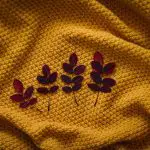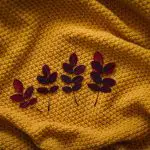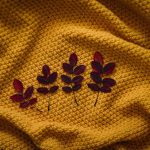When it comes to protecting baby fabrics from wear, you're not just choosing items for aesthetics; you're making decisions that can impact their longevity. It's essential to select durable materials and establish a proper washing routine to keep them looking fresh. Regularly inspecting for damage and storing items correctly can also play a crucial role. But there are often overlooked strategies that can significantly enhance the lifespan of these fabrics, ensuring your baby's wardrobe remains in top condition. Curious about what these strategies might be?
Table of Contents
Key Takeaways
- Choose durable fabrics like cotton blends or heavier materials such as canvas to withstand frequent washing and wear.
- Wash baby fabrics every 1-2 weeks in cold water using gentle, fragrance-free detergents to prevent damage.
- Inspect fabrics weekly for signs of wear, such as loose threads, and address issues promptly to avoid further damage.
- Store clean, dry fabrics in breathable containers and stack heavier items to prevent crushing lighter ones.
Choosing Durable Fabrics
When selecting baby fabrics, focus on durable materials that can withstand frequent washing and everyday wear. You want to choose fabrics that not only feel soft against your baby's skin but also stand the test of time.
Look for cotton blends or polyester, as these materials offer excellent durability and are often machine washable.
Consider the weight of the fabric too; heavier fabrics tend to resist wear better than lighter ones. For instance, canvas and denim are great for items like diaper bags or play mats, while thicker cotton can be a solid choice for clothing.
Additionally, check for fabric finishes—some are treated to enhance strength and stain resistance. If you're considering knits, opt for those with a tighter weave, as they're less likely to pill or tear.
Don't forget about the color and print. Fabrics with darker colors or busy patterns can help mask stains better than lighter shades.
Ultimately, investing in durable fabrics will save you time and effort in the long run, ensuring your baby's items stay vibrant and functional despite everyday challenges.
Proper Washing Techniques
To keep baby fabrics looking their best, follow specific washing techniques that preserve their softness and durability.
Start by reading the care labels on your baby's clothes to understand the recommended washing instructions. Always wash in cold water to prevent shrinking and fading. Use a gentle detergent that's free of harsh chemicals and fragrances, as these can irritate your baby's sensitive skin.
When loading the washer, avoid overloading it. This allows the fabrics to move freely and reduces friction, which can cause wear and tear. For delicate items, consider using a mesh laundry bag to provide extra protection. Choose a gentle cycle to minimize agitation and maintain the fabric's integrity.
If possible, air dry your baby's clothes instead of using a dryer. High heat can weaken fibers and lead to pilling. If you must use a dryer, opt for a low heat setting and remove items promptly to prevent wrinkles.
Lastly, fold or hang your baby's clothes immediately after drying to avoid creases and maintain their shape. By following these techniques, you'll help ensure that baby fabrics remain soft and in great condition for as long as possible.
Stain Removal Strategies
Even with careful washing techniques, stains are bound to happen, so having effective stain removal strategies is key to keeping baby fabrics looking fresh. When you face a stubborn stain, don't panic. Instead, act quickly to prevent it from setting in. Here are some strategies that can help:
- Blot, don't rub: Use a clean cloth to gently blot the stain. Rubbing can spread it further and damage the fabric.
- Cold water rinse: Rinse the stained area with cold water as soon as possible. This helps to lift the stain before applying any treatment.
Remember to always test any solution on a small, hidden area first to check for colorfastness.
If the stain persists, you might need to repeat the process or consult a professional cleaner.
Safe Storage Practices
Storing baby fabrics properly ensures they remain in great condition for future use.
First, make sure your fabrics are clean and dry before putting them away. Any leftover stains or moisture can lead to mildew or damage over time. Fold the items neatly to prevent creasing and avoid any unnecessary stress on the fibers.
Next, choose a suitable storage container. Opt for breathable bins, like cotton or canvas, to allow air circulation while keeping dust at bay. Avoid plastic containers that can trap moisture, leading to mold growth. If you're using plastic, ensure it's specifically designed for fabric storage and includes ventilation.
When stacking items, place heavier fabrics at the bottom and lighter ones on top to prevent crushing. If you're storing delicate items, consider using acid-free tissue paper to provide extra cushioning.
Label your containers clearly, so you can easily find what you need later.
Avoiding Excessive Sunlight
Excessive sunlight can quickly fade and weaken baby fabrics, so it's crucial to keep them out of direct sunlight when not in use. When you're planning your baby's space, consider how sunlight can affect their items.
Here are some practical tips to help you minimize sun exposure:
- Use curtains or blinds: Invest in light-blocking curtains or shades that can easily be drawn when the sun is at its peak.
- Position furniture wisely: Arrange cribs, changing tables, and play areas away from windows that get a lot of sunlight.
Regular Maintenance Tips
To keep baby fabrics looking fresh and lasting longer, it's essential to incorporate regular maintenance into your routine. Start by washing baby clothes and linens frequently, but always follow the care labels. Choose gentle detergents to avoid harsh chemicals that can wear the fabric down.
Another crucial tip is to rotate your baby's wardrobe. This ensures that no single item gets too much wear and tear. Additionally, inspect fabrics regularly for any signs of damage; fixing small issues early can prevent bigger problems later on.
Here's a quick reference table to help you with your regular maintenance routine:
| Task | Frequency | Tips |
|---|---|---|
| Wash baby fabrics | Every 1-2 weeks | Use mild detergent |
| Inspect for damage | Weekly | Look for loose threads |
| Rotate items | Every season | Mix and match outfits |
Frequently Asked Questions
What Types of Dyes Are Safe for Baby Fabrics?
When choosing dyes for baby fabrics, you'll want to look for non-toxic, water-based options. Natural dyes from plants are safe too. Always check labels to ensure they meet safety standards for your little one.
How Can I Tell if a Fabric Is Baby-Friendly?
To tell if a fabric's baby-friendly, check for non-toxic certifications, soft textures, and breathable materials. Avoid harsh chemicals and opt for hypoallergenic options. Always feel the fabric—if it's gentle, it's likely safe for your baby.
Are Organic Fabrics Better for Babies?
Organic fabrics are often better for babies because they're free from harmful chemicals and pesticides. You'll find them softer and safer for delicate skin, reducing the risk of irritation and allergies while keeping your baby comfy.
Can I Use Bleach on Baby Clothing?
You shouldn't use bleach on baby clothing. It can irritate their sensitive skin and damage the fabric. Instead, opt for gentle, baby-safe detergents to keep their clothes clean and safe for everyday wear.
How Do I Identify Fabric Blends Suitable for Babies?
To identify fabric blends suitable for babies, look for soft, breathable materials like cotton or bamboo. Avoid harsh synthetics and check labels for hypoallergenic properties. You want comfort and safety for your little one.
- Exploring Vera Bradley’s Signature Cotton Gabardine Collection - June 24, 2025
- How to Style a Classic Gabardine Trench Coat for Women - June 24, 2025
- Worsted Wool Gabardine: What It Is and Why It’s Superior - June 24, 2025






